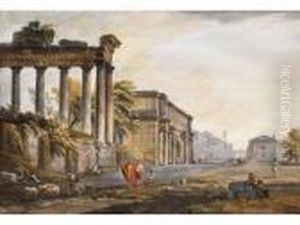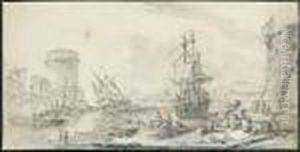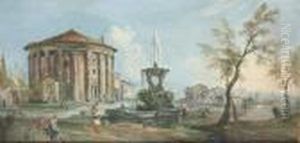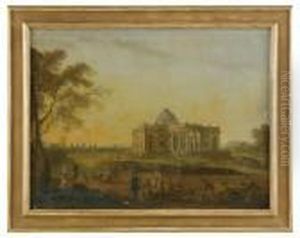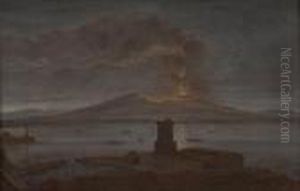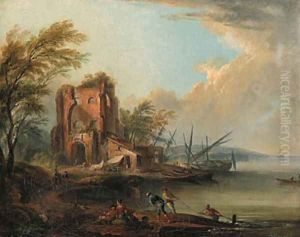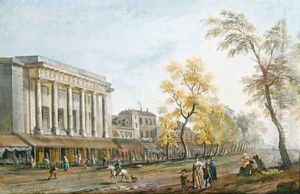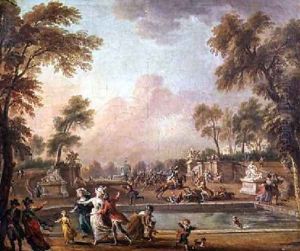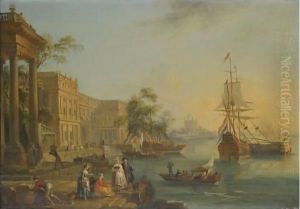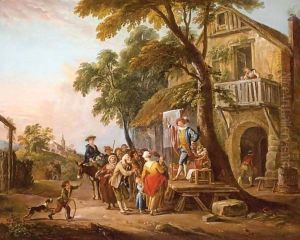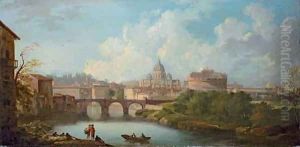Jean-Baptiste Lallemand Paintings
Jean-Baptiste Lallemand was a French artist known primarily for his landscape and architectural paintings, as well as his expertise in the genre of capriccio, a type of landscape painting where architectural elements are arranged in a fantastical manner. Born in Dijon, France, in 1716, he moved to Paris to pursue his artistic career. Lallemand was a student of the painter Claude-Joseph Vernet, who was a significant influence on his work. Lallemand's paintings often depict ruins and pastoral scenes, imbued with a sense of romanticism and a keen eye for detail, which was typical of the period's artistic trends.
His career developed during the Rococo period, a time characterized by elaborate ornamentation and asymmetric designs, which is reflected in the intricate details and playful elements in his paintings. Lallemand was part of the Académie Royale de Peinture et de Sculpture, which was a testament to his skills and recognition in the art community during his time. Despite this, Lallemand's work was somewhat overshadowed by more prominent artists of the era, and as such, he did not achieve the same level of fame as some of his contemporaries.
After spending considerable time in Paris, Lallemand traveled to Italy, where he was further inspired by the landscape and classical ruins. His Italian sojourn had a profound impact on his work, leading to a greater emphasis on architectural elements and the incorporation of Italianate features into his landscapes.
Jean-Baptiste Lallemand's work is preserved in various museums and collections, showcasing his contributions to 18th-century French art. He died in Paris in 1803, leaving behind a legacy of work that captures the spirit of his time and the essence of the Rococo movement in French landscape painting.





